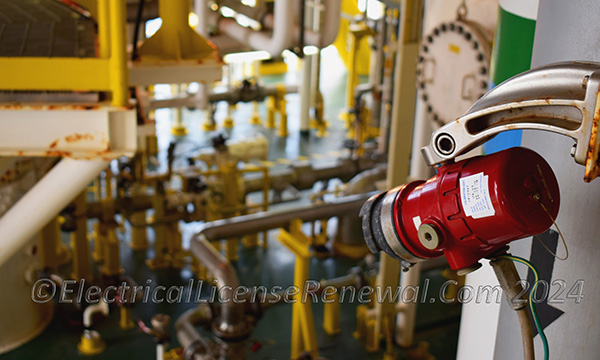Specialized Detectors (UV/IR, Gas Sensing).

Specialized detectors, such as ultraviolet (UV) and infrared (IR) detectors and gas sensors, are used in high-risk areas where standard smoke or heat detectors might not be sufficient. UV and IR detectors are designed to detect the light waves emitted by flames. UV detectors are sensitive to the ultraviolet radiation produced by flames, while IR detectors sense the infrared radiation. These detectors are extremely quick to operate and are typically used in high-hazard areas such as industrial facilities, fuel-loading areas, and places where explosions might occur.
One of the main advantages of UV and IR detectors is their ability to detect fires rapidly, often before significant smoke is produced. However, they must have a clear line of sight to the flame to be effective and can be susceptible to false alarms from sunlight or other sources of UV and IR radiation. To mitigate this, many UV/IR detectors incorporate filters and advanced algorithms to distinguish between real fire signals and false sources.
Gas sensors detect the presence of specific gases that may indicate a fire or hazardous condition. Common gases monitored by these sensors include carbon monoxide (CO), methane, propane, and hydrogen. Gas sensors are particularly useful in environments where gas leaks pose a significant risk, such as chemical plants, laboratories, and confined spaces. These sensors can provide early warning of dangerous conditions, allowing for prompt evacuation and intervention.
Proper installation and maintenance of specialized detectors are crucial to their effectiveness. UV/IR detectors should be positioned to have a clear view of potential fire sources without obstructions. Gas sensors should be placed in areas where gas accumulation is likely, such as near storage tanks or in areas with poor ventilation.
By using specialized detectors in high-risk areas, installers can enhance the safety and reliability of alarm systems, providing early detection and reducing the risk of false alarms from environmental factors.